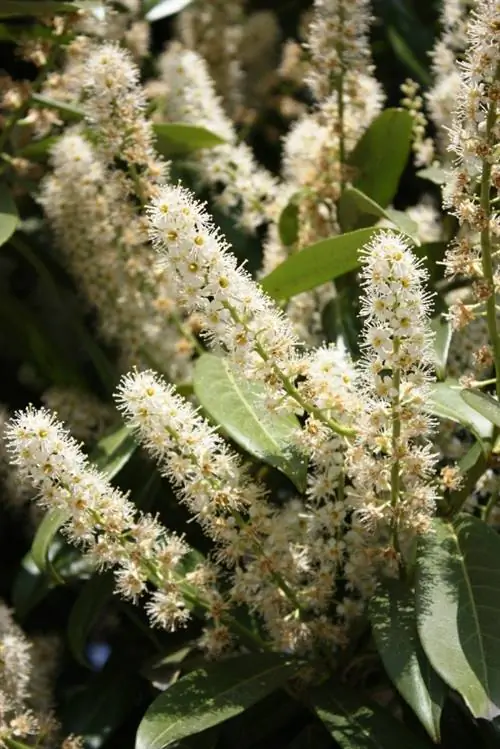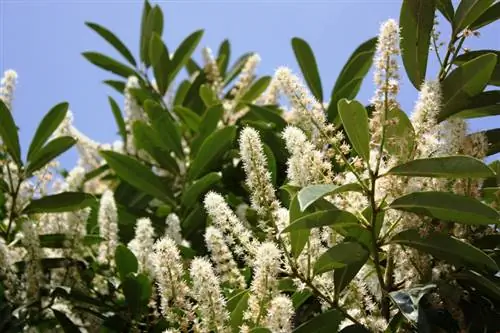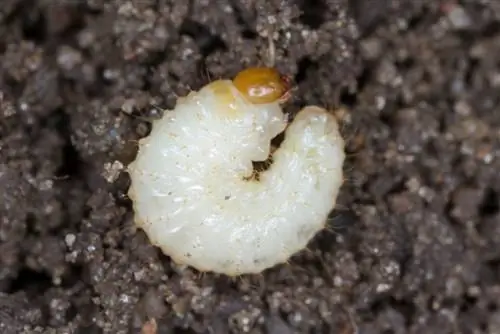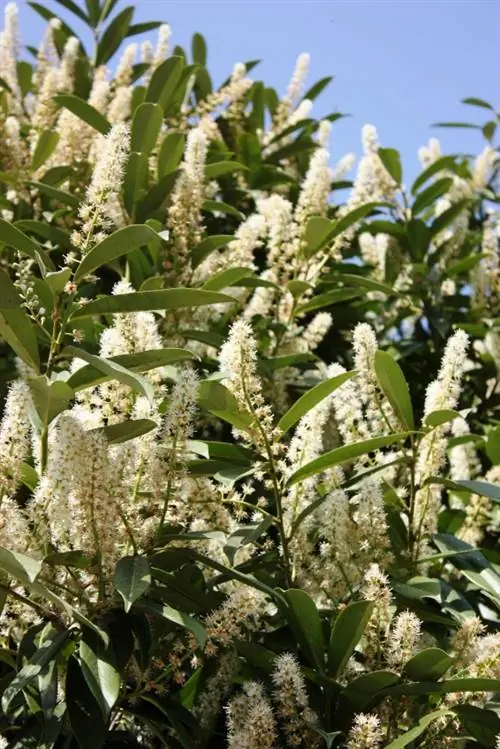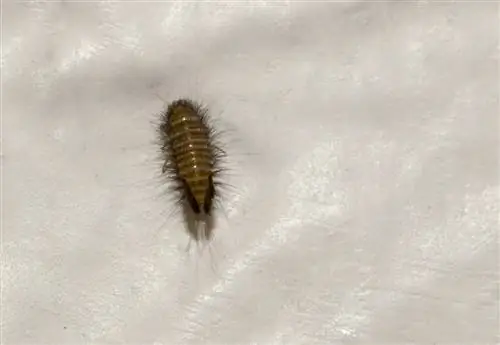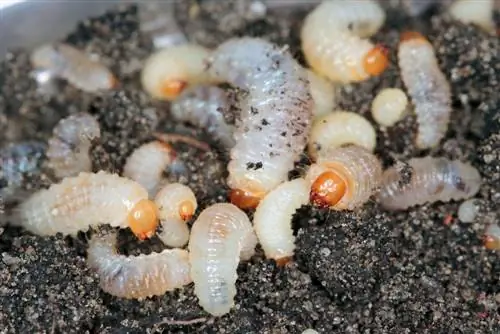- Author admin [email protected].
- Public 2023-12-16 16:46.
- Last modified 2025-01-23 11:20.
If you discover semicircular feeding marks on the edges of the leaves of the laurel cherry, the black weevil has nested in the plant. However, more dangerous than the beetle are the larvae that live in the soil and feed on the roots. It is therefore advisable to take appropriate measures to combat insects in severe infestations.
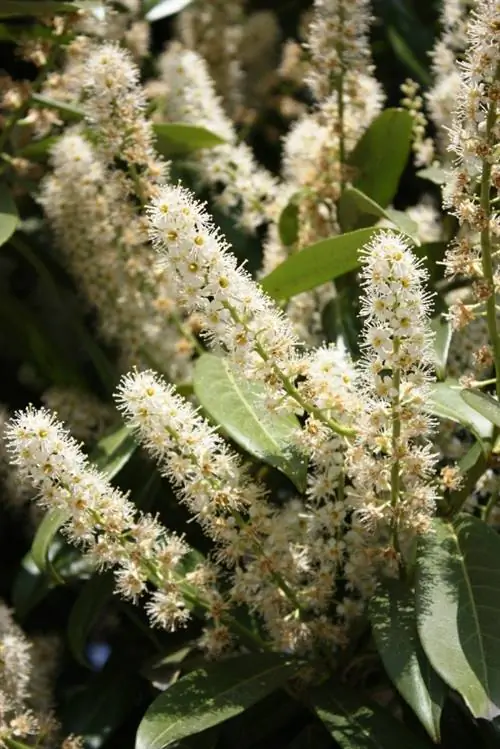
What to do if there are beetles on the cherry laurel?
Beetles on the cherry laurel are often black weevils that primarily tamper with the plant's foliage. The beetles are controlled by collecting them, trapping them with wood wool or using nematodes.
Occurrence and life cycle of the beetle
The beetle, which is around seven to twelve millimeters in size, is flightless and hides in the immediate vicinity of the host plant during the day. It only leaves its hiding place when it gets dark and you can track down the animals using a flashlight.
The first generation of beetles hatches in May and from this point on primarily attacks plants with relatively robust foliage. In addition to the cherry laurel, the leaves of rhododendrons, yews or spars are often eaten away.
Between June and August, the females lay around 1,000 eggs in the soil, from which the thick, white larvae of the beetle hatch. They initially feed on the fine hair roots. Later, peel the root skin from the main roots of the host plant. If the infestation is severe, the laurel cherry suffers extremely and can even die.
Fighting the black weevil
As soon as you discover the first beetles on the cherry laurel, you should try to catch them. For this purpose, place flower pots filled with wood shavings under the bushes. Alternatively, you can lay out rotten, slightly damp wooden boards. The black weevils hide under these traps and you can collect the animals during the day.
However, if the infestation is severe, this measure is not sufficient. In this case, the fight is with nematodes (€43.00 on Amazon), which you can purchase from specialist retailers. Proceed as follows:
- Apply nematodes between April and June and a second time between September and October.
- The control should be carried out in the evening or in bad weather, as the nematodes die in sunlight.
- Dissolve nematodes thoroughly in water.
- Pour a little beyond the affected area.
- Keep the soil around the plants well moist for the following two to three weeks, as the worms cannot move in dry conditions and die.
Tips & Tricks
Shrews and hedgehogs are natural enemies of the black weevil. If you create refuges for beneficial insects in your garden, this will prevent the pests from multiplying excessively. Watering with wormwood manure is also said to keep the voracious beetles away.

